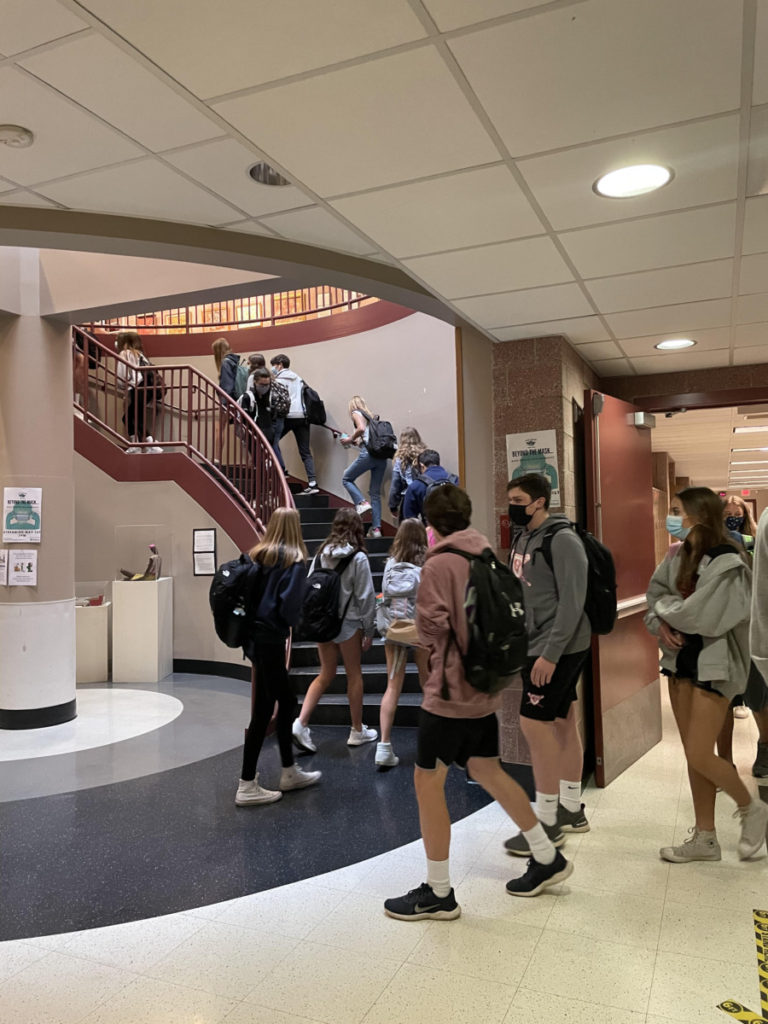Caroline Vincent, News Editor
@cvincentcourant
In his Superintendent Update from March 9th, Bryan Luizzi announced that NCHS would be returning to 100% capacity starting on March 12th. This followed months of the hybrid and hybrid-plus model, where students rotated between in-person and online learning.
In the fall, NCPS first returned to full capacity learning. However, when the high school saw a spike in cases, high school students had to go back to the hybrid model.
In an email, Dr. Luizzi said that it was the right time for NCHS to return to full in-person learning, as local and statewide metrics are improving, the staff surveillance testing program continues to be a success, and faculty and staff are getting vaccinated.

According to Principal William Egan, making the decision to return to 100% capacity was a long process. “As a district, our number one priority was to get kids back in school full time. We wanted to be at the forefront of following the science of the pandemic, but also, we knew how important it was to get kids in the building,” he said. “It’s not the same when kids aren’t here.”
When teacher vaccinations began in early March, Mr. Egan knew that getting everyone back into the building was a possibility. Vaccinations, on top of mitigation strategies, have allowed the spread of COVID-19 to be limited in the high school. Additionally, teachers who are vaccinated do not need to quarantine when exposed to COVID-19. This will help eliminate staff shortages.
NCHS Nurses Elizabeth Imbrongo and Karina Giangos are excited for students to be in the building but think it is important for everyone to remember that the pandemic is still going on. “We are trying to educate and encourage everyone to keep doing what they are doing,” Ms. Imbrongo said. “We are all in this together.”
Ms. Imbrongo wants everyone to play things safe, and try their best to not be quarantined. “I think it’s great to see the kids coming back to school because we have been out for so long,” she said.
Ms. Giangos is confident that the mitigation strategies are keeping students safe. “We are doing everything we can to make sure the classrooms are safe. For example, having at least three feet between the desks, wearing masks, facing forward, and keeping seating assignments, which is very important for contact tracing,” Ms. Giangos said.
Ms. Giangos does not think that there will be a huge spike in cases now that the building is in full capacity. “I don’t foresee it spreading from inside the school, but unfortunately, things happen outside of school and then they come back to the school,” she said.
It is important that students do not go to school or practice if they are feeling ill. “A lot of the cases we have had in school have started with a little sniffle, something small and very mild,” Ms. Giangos said.
Mr. Egan wants to remind students that the remote option is still available, and students should take advantage of it when they are feeling sick. However, while he sees a value in e-Learning, he emphasizes that there needs to be parameters around it. “It can’t be you go in for one period and go home for three and get online,” Mr. Egan said. “E-Learning is a challenge for teachers, it’s a challenge for kids, but there are some benefits.”
For Mr. Egan, the most exciting part of returning to full capacity is seeing a change in enthusiasm towards education. “Everybody is getting a renewed sense of joy for school,” he said. “In the past, people looked at it as ugh school, but now people want to be in school. We really value it in a way that maybe we didn’t before.”




